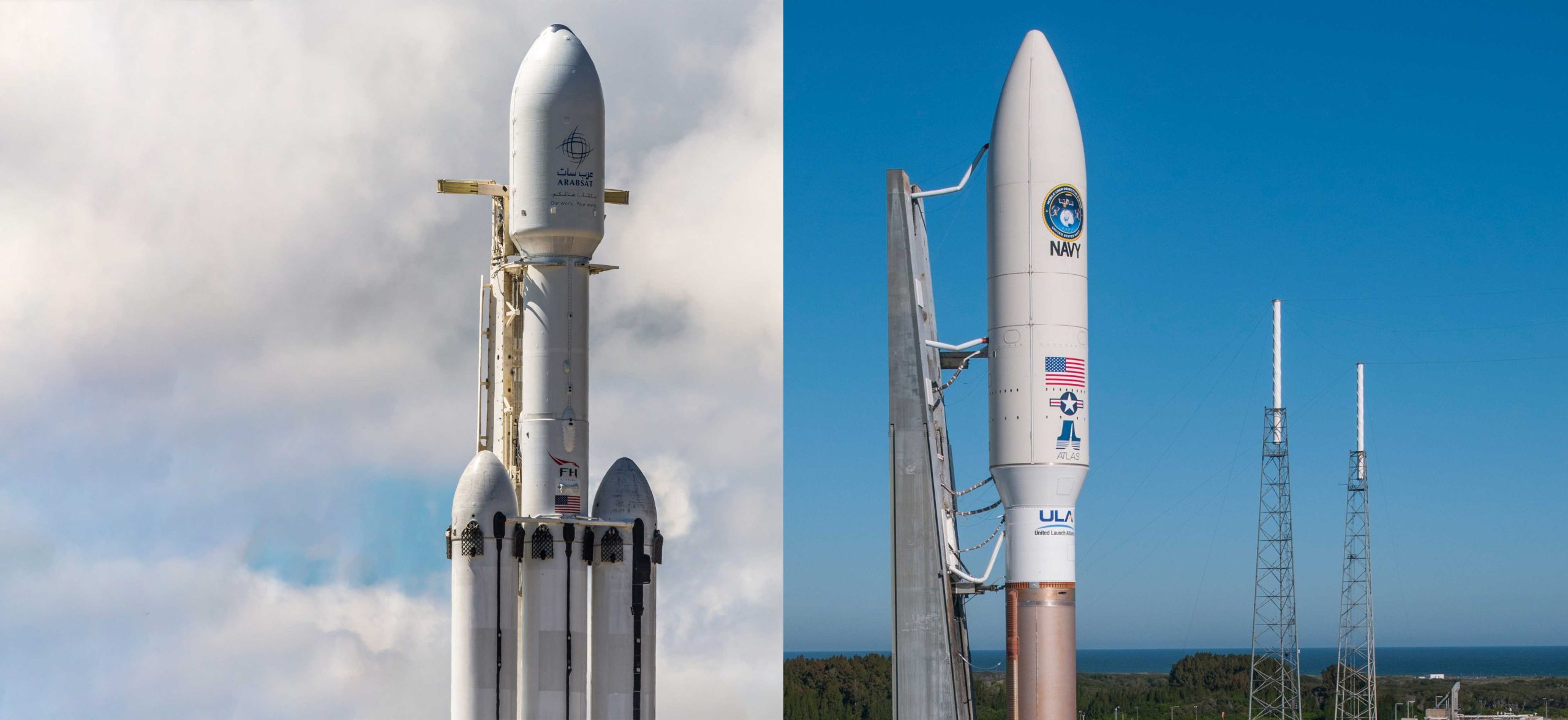
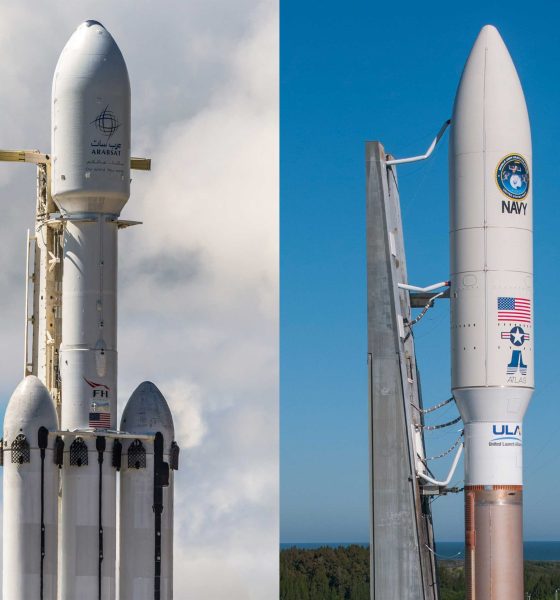
News
SpaceX may have signed a fairing agreement with ULA supplier RUAG (Update: no agreement)
According to unverified and speculative comments reportedly made to a member of the space industry by a RUAG spokesperson, the prominent aerospace supplier may have reached an agreement with SpaceX to manufacture a handful of larger payload fairings for future Falcon 9 and Heavy launches.
In the likely event that SpaceX is one of two contractors awarded a portion of several dozen US military launch contracts next year, the company will need to be able to cater to niche requirements, including accommodating unusually tall military satellites. Those satellites can be so tall that SpaceX’s own payload fairing – generally middle-of-the-pack relative to competitors’ offerings – may be too short, meaning that SpaceX will have to find ways around that minor shortcoming.
Update: Tim Chen has retracted his earlier comments and has stated that there is actually no agreement currently in place with SpaceX for RUAG to produce taller fairings out of its new Decatur, AL factory.
Additionally, ULA CEO Tory Bruno clarified that the company’s “[new fairing] has [ULA] intellectual property in its design and manufacture … [and] is currently planned only for use on Atlas and Vulcan”, meaning that any cooperation between SpaceX and RUAG would likely require a new production facility and a somewhat different fairing design.
“ULA’s new fairing, which is built in our factory in Decatur, has our intellectual property in its design and manufacture. This fairing is currently planned only for use on Atlas and Vulcan. You would want to ask RUAG about business they might have with their other customers.”
Tory Bruno, August 14th, 2019
Regardless of the veracity of these recent claims, it appears that SpaceX has three obvious responses at its disposal: design and build an entirely new variant of its universal Falcon fairing, purchase the necessary fairings from an established supplier, or bow out of launch contract competitions that demand it. The latter option is immediately untenable given that it could very well mean bowing out of the entire US military competition, known as Phase 2 of the National Security Space Launch program’s (NSSL; formerly EELV) Launch Services Procurement (LSP).
For dubious reasons, the US Air Force (USAF) has structured the NSSL Phase 2 acquisition in such a way that – despite there being four possible competitors – only two will be awarded contracts at its conclusion. The roughly ~30 launch contracts up for grabs would be split 60:40 between the two victors, leaving two competitors completely emptyhanded. In short, bowing out of the Phase 2 competition could mean forgoing as many as one or two-dozen contracts worth at least $1-2B, depending on the side of the 60:40 split.
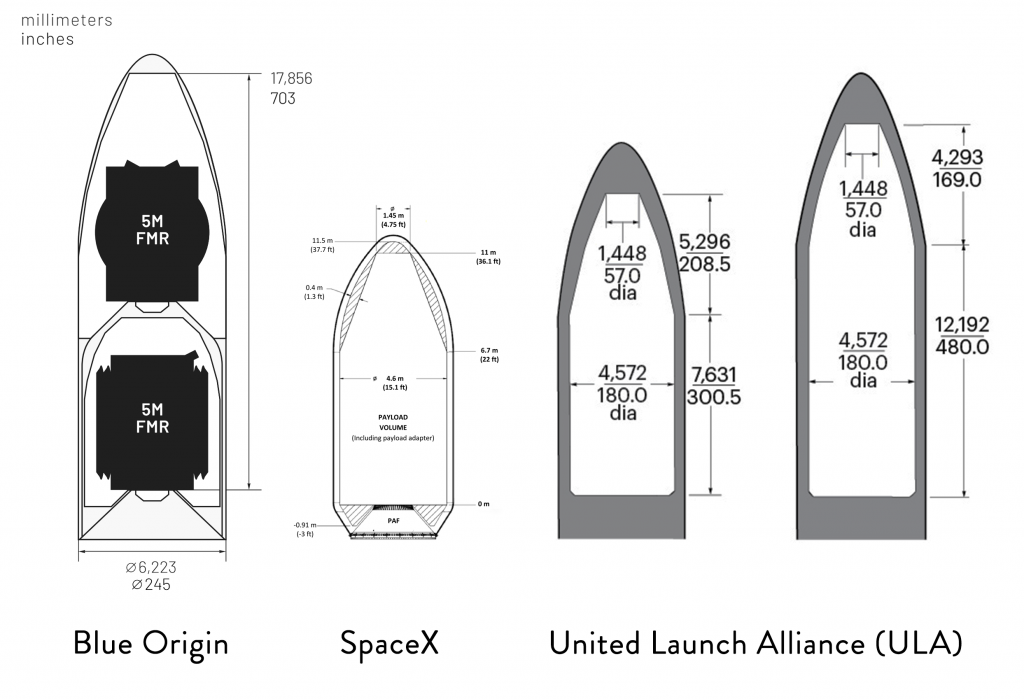
According to a handful of recent comments and developments, SpaceX has likely sided with the option of procuring taller fairings from an industry supplier. As it turns out, European company RUAG has effectively cornered the Western rocket fairing market, with SpaceX being the only Western launch company currently building its own fairings. RUAG builds fairings for both Arianespace’s Ariane 5 and Vega rockets and ULA’s Atlas V. Additionally, RUAG will build and supply fairings for both companies’ next-gen rockets – Arianespace’s Ariane 6 and ULA’s Vulcan – and builds fairings for a number of smallsat launch companies.
Comments made in June by a RUAG official confirmed that there was some semblance of a relationship between SpaceX and RUAG for the purpose of satisfying USAF needs for taller fairings, although the phrasing suggested that the cooperation was in its early stages and nothing had been solidified.
“In a June 12 letter to Smith, the company’s CEO Peter Guggenbach makes the case that legislation forcing access to suppliers is unnecessary in this case because RUAG does not have an exclusive arrangement with ULA and is willing to work with SpaceX or any other launch providers.
“For this competition, we are in the process of submitting or have submitted proposals to multiple prime contractors regarding launch vehicle fairings. In those agreements, we share technical data to support a prime contractor’s bid while protecting our intellectual property.”
RUAG vice president Karl Jensen told SpaceNews the company has a “significant partnership” with ULA but is looking to work with others too. “We have an offer to SpaceX,” he said. “We don’t know if they’ll accept it.”
SpaceNews, 06/13/2019
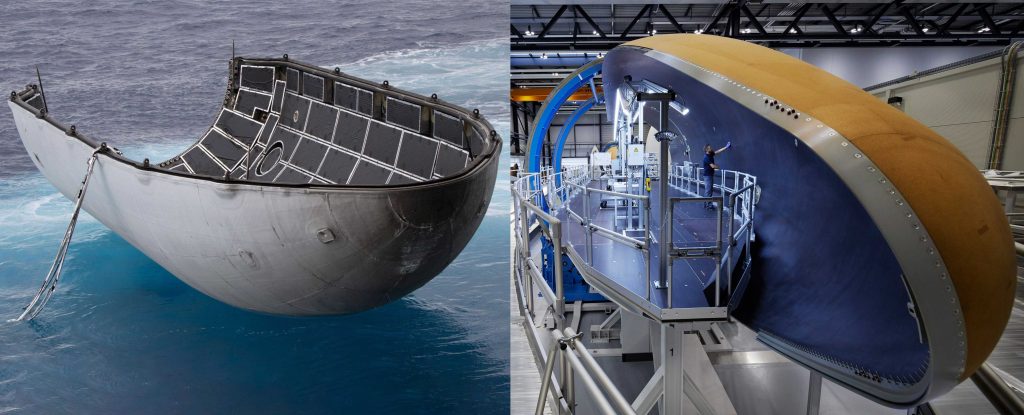
Interestingly, although ULA’s RUAG-built Atlas V fairing is slightly narrower than SpaceX’s 5.2m (17 ft) diameter fairing, Atlas V’s largest fairing is significantly taller, supporting payloads up to 16.5m (54 ft) tall compared to 11m (36 ft) for Falcon 9 and Heavy. Given that just a tiny portion of military spacecraft actually need fairings that tall, SpaceX is apparently not interested in simply modifying its own fairing design and production equipment to support a 20-30% stretch.
This likely relates in part to the fact that one of SpaceX’s three NSSL Phase 2 competitors – Northrop Grumman (Omega), Blue Origin (New Glenn), and ULA (Vulcan) – are guaranteed to receive hundreds of millions of dollars of development funding after winning one of the two available slots (60% or 40% of contracts). SpaceX, on the other hand, will receive no such funding while still having to meet the same stringent USAF requirements compete in LSP Phase 2. Of note, Congressman Adam Smith managed to insert a clause into FY2020’s defense authorization bill that could disburse up to $500M to SpaceX in the event that the company is one of Phase 2’s two winners.
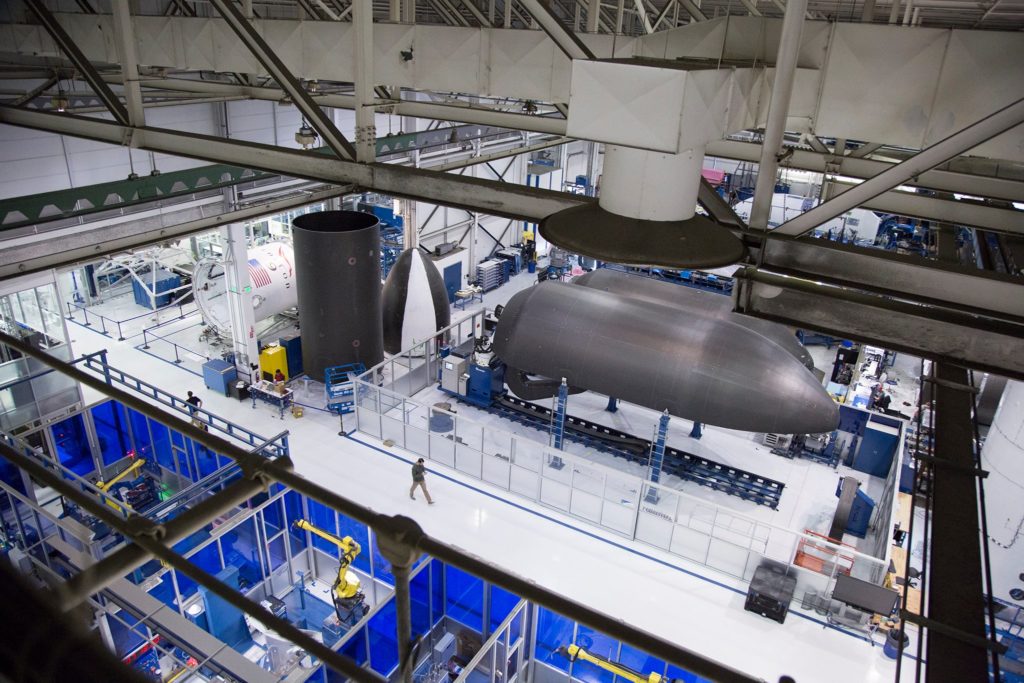
Despite this potential influx of infrastructure-focused funds, SpaceX may still be pursuing taller Falcon fairings from RUAG as a backup in the event that the company is not one of the two Phase 2 winners or is unable to use some of the $500M secured by Rep. Smith to develop its own stretched fairing.
On August 12th, SpaceX – along with Blue Origin, ULA, and NGIS – submitted bids for NSSL Phase 2 launch services, confirming that all four companies will indeed be in the running for contracts. The USAF is not expected to announce the results of this competition until Q2 2020.
Check out Teslarati’s Marketplace! We offer Tesla accessories, including for the Tesla Cybertruck and Tesla Model 3.

News
Tesla is not sparing any expense in ensuring the Cybercab is safe
Images shared by the longtime watcher showed 16 Cybercab prototypes parked near Giga Texas’ dedicated crash test facility.

The Tesla Cybercab could very well be the safest taxi on the road when it is released and deployed for public use. This was, at least, hinted at by the intensive safety tests that Tesla seems to be putting the autonomous two-seater through at its Giga Texas crash test facility.
Intensive crash tests
As per recent images from longtime Giga Texas watcher and drone operator Joe Tegtmeyer, Tesla seems to be very busy crash testing Cybercab units. Images shared by the longtime watcher showed 16 Cybercab prototypes parked near Giga Texas’ dedicated crash test facility just before the holidays.
Tegtmeyer’s aerial photos showed the prototypes clustered outside the factory’s testing building. Some uncovered Cybercabs showed notable damage and one even had its airbags engaged. With Cybercab production expected to start in about 130 days, it appears that Tesla is very busy ensuring that its autonomous two-seater ends up becoming the safest taxi on public roads.
Prioritizing safety
With no human driver controls, the Cybercab demands exceptional active and passive safety systems to protect occupants in any scenario. Considering Tesla’s reputation, it is then understandable that the company seems to be sparing no expense in ensuring that the Cybercab is as safe as possible.
Tesla’s focus on safety was recently highlighted when the Cybertruck achieved a Top Safety Pick+ rating from the Insurance Institute for Highway Safety (IIHS). This was a notable victory for the Cybertruck as critics have long claimed that the vehicle will be one of, if not the, most unsafe truck on the road due to its appearance. The vehicle’s Top Safety Pick+ rating, if any, simply proved that Tesla never neglects to make its cars as safe as possible, and that definitely includes the Cybercab.
Elon Musk
Tesla’s Elon Musk gives timeframe for FSD’s release in UAE
Provided that Musk’s timeframe proves accurate, FSD would be able to start saturating the Middle East, starting with the UAE, next year.

Tesla CEO Elon Musk stated on Monday that Full Self-Driving (Supervised) could launch in the United Arab Emirates (UAE) as soon as January 2026.
Provided that Musk’s timeframe proves accurate, FSD would be able to start saturating the Middle East, starting with the UAE, next year.
Musk’s estimate
In a post on X, UAE-based political analyst Ahmed Sharif Al Amiri asked Musk when FSD would arrive in the country, quoting an earlier post where the CEO encouraged users to try out FSD for themselves. Musk responded directly to the analyst’s inquiry.
“Hopefully, next month,” Musk wrote. The exchange attracted a lot of attention, with numerous X users sharing their excitement at the idea of FSD being brought to a new country. FSD (Supervised), after all, would likely allow hands-off highway driving, urban navigation, and parking under driver oversight in traffic-heavy cities such as Dubai and Abu Dhabi.
Musk’s comments about FSD’s arrival in the UAE were posted following his visit to the Middle Eastern country. Over the weekend, images were shared online of Musk meeting with UAE Defense Minister, Deputy Prime Minister, and Dubai Crown Prince HH Sheikh Hamdan bin Mohammed. Musk also posted a supportive message about the country, posting “UAE rocks!” on X.
FSD recognition
FSD has been getting quite a lot of support from foreign media outlets. FSD (Supervised) earned high marks from Germany’s largest car magazine, Auto Bild, during a test in Berlin’s challenging urban environment. The demonstration highlighted the system’s ability to handle dense traffic, construction sites, pedestrian crossings, and narrow streets with smooth, confident decision-making.
Journalist Robin Hornig was particularly struck by FSD’s superior perception and tireless attention, stating: “Tesla FSD Supervised sees more than I do. It doesn’t get distracted and never gets tired. I like to think I’m a good driver, but I can’t match this system’s all-around vision. It’s at its best when both work together: my experience and the Tesla’s constant attention.” Only one intervention was needed when the system misread a route, showcasing its maturity while relying on vision-only sensors and over-the-air learning.
News
Tesla quietly flexes FSD’s reliability amid Waymo blackout in San Francisco
“Tesla Robotaxis were unaffected by the SF power outage,” Musk wrote in his post.

Tesla highlighted its Full Self-Driving (Supervised) system’s robustness this week by sharing dashcam footage of a vehicle in FSD navigating pitch-black San Francisco streets during the city’s widespread power outage.
While Waymo’s robotaxis stalled and caused traffic jams, Tesla’s vision-only approach kept operating seamlessly without remote intervention. Elon Musk amplified the clip, highlighting the contrast between the two systems.
Tesla FSD handles total darkness
The @Tesla_AI account posted a video from a Model Y operating on FSD during San Francisco’s blackout. As could be seen in the video, streetlights, traffic signals, and surrounding illumination were completely out, but the vehicle drove confidently and cautiously, just like a proficient human driver.
Musk reposted the clip, adding context to reports of Waymo vehicles struggling in the same conditions. “Tesla Robotaxis were unaffected by the SF power outage,” Musk wrote in his post.
Musk and the Tesla AI team’s posts highlight the idea that FSD operates a lot like any experienced human driver. Since the system does not rely on a variety of sensors and a complicated symphony of factors, vehicles could technically navigate challenging circumstances as they emerge. This definitely seemed to be the case in San Francisco.
Waymo’s blackout struggles
Waymo faced scrutiny after multiple self-driving Jaguar I-PACE taxis stopped functioning during the blackout, blocking lanes, causing traffic jams, and requiring manual retrieval. Videos shared during the power outage showed fleets of Waymo vehicles just stopping in the middle of the road, seemingly confused about what to do when the lights go out.
In a comment, Waymo stated that its vehicles treat nonfunctional signals as four-way stops, but “the sheer scale of the outage led to instances where vehicles remained stationary longer than usual to confirm the state of the affected intersections. This contributed to traffic friction during the height of the congestion.”
A company spokesperson also shared some thoughts about the incidents. “Yesterday’s power outage was a widespread event that caused gridlock across San Francisco, with non-functioning traffic signals and transit disruptions. While the failure of the utility infrastructure was significant, we are committed to ensuring our technology adjusts to traffic flow during such events,” the Waymo spokesperson stated, adding that it is “focused on rapidly integrating the lessons learned from this event, and are committed to earning and maintaining the trust of the communities we serve every day.”








